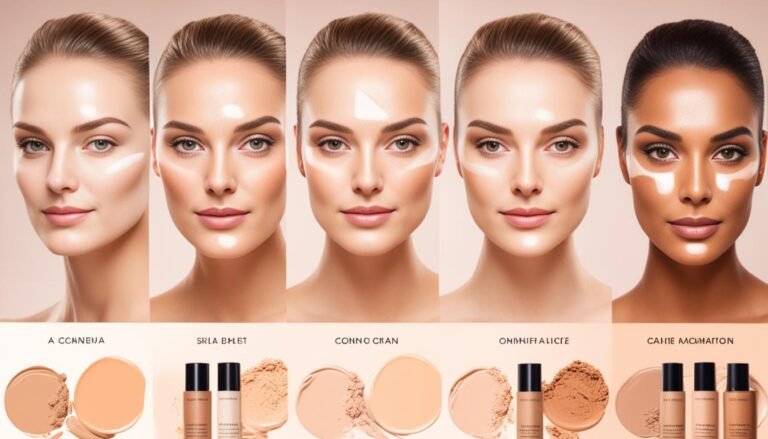Does skin color affect attractiveness?
When it comes to assessing attractiveness, our society tends to focus on various features, from facial symmetry to body shape. But have you ever wondered about the influence of skin color on perceived attractiveness? Is there a connection between the shade of someone’s skin and how attractive they are considered to be?
Key Takeaways:
- Facial skin color plays a role in the perception of attractiveness, health, and age.
- Lighter and more homogenous skin color is generally associated with higher levels of attractiveness.
- Variations in skin color, such as increased redness or yellowness, can impact how individuals are perceived.
- Cultural background and personal preferences may also influence the perception of attractiveness based on skin color.
- The impact of skin color on attractiveness is not universal and can vary across cultures and within ethnic groups.
The Role of Skin Color in Perceived Health and Attractiveness
Skin color plays a significant role in the perception of both health and attractiveness. Studies have indicated that individuals with lighter and more uniform skin tones are generally perceived as being more attractive and healthier. This association between skin color and perceived health and attractiveness can be attributed to several factors.
One of the main reasons behind this perception is the cultural and historical association of lighter skin with higher social status and beauty standards. Throughout history, lighter skin has been considered a symbol of wealth and privilege in many societies. As a result, individuals with lighter skin are often seen as more attractive and healthier due to these ingrained societal norms.
Additionally, lighter skin tones are commonly associated with youthfulness and a lack of blemishes or imperfections. Smooth and evenly toned skin is usually perceived as a sign of good health and vitality. This perception can influence how individuals are seen in terms of attractiveness and overall well-being.
It is important to note that the perception of attractiveness based on skin color is not universal. Different cultures and personal preferences can influence how individuals perceive beauty standards. For example, in some cultures, darker skin may be considered more attractive and desirable. Beauty standards and perceptions of attractiveness can vary greatly across different ethnic groups and geographical regions.
We must also acknowledge the significance of personal preferences when it comes to the perception of attractiveness. Each individual may have their own unique definition of beauty, and skin color is just one aspect that contributes to the overall perception of attractiveness. Personal preferences can be influenced by various factors such as cultural upbringing, media representation, and personal experiences.
Table: Skin Color Perception in Different Cultures
| Culture | Perception of Skin Color |
|---|---|
| Western cultures | Lighter skin tones are often associated with beauty and health. |
| East Asian cultures | Preference for lighter skin as a symbol of beauty and social status. |
| African cultures | Preference for darker skin tones as a symbol of beauty and cultural identity. |
| Indian cultures | Preference for lighter skin linked to historical caste and social divisions. |
While skin color does play a role in perceived health and attractiveness, it is essential to promote inclusivity and embrace diversity. Beauty is a subjective concept and goes beyond skin color. We should strive to celebrate and appreciate different standards of beauty, recognizing that attractiveness is not solely determined by skin color.
Cultural and Ethnic Influences on the Perception of Skin Color
The perception of skin color and its impact on attractiveness can be influenced by cultural and ethnic factors. Different cultures have distinct beauty standards that shape the perception of skin color. Preferences for specific skin colors can vary across cultures, contributing to diverse perceptions of attractiveness.
In some cultures, lighter skin may be considered more desirable and associated with higher social status. These cultural influences can be rooted in historical factors, socioeconomic dynamics, and colonial legacies. For example, in parts of East Asia, fair skin is often associated with beauty and is considered a symbol of aristocratic status.
On the other hand, in certain cultures, darker skin may be perceived as more attractive. This can be seen in regions such as Africa, the Caribbean, and South Asia, where individuals with deeper skin tones are often celebrated for their unique beauty. The cultural value placed on darker skin in these regions can be attributed to historical and cultural factors, as well as the representation and celebration of diverse ethnicities.
Within different ethnic groups, the perception of skin color and its impact on attractiveness can also vary. Subtle variations in skin tone within specific ethnicities can hold cultural significance and influence beauty standards. For example, in the African American community, the perception of skin color and its attractiveness can vary based on factors such as undertones, shades, and even historical associations with racial identity.
Personal preferences and experiences further play a role in shaping individual perceptions of skin color and attractiveness. Each person’s unique cultural background, upbringing, and exposure to diverse representations of beauty can significantly influence their perception of attractiveness based on skin color.
“Different cultures have different beauty standards, which can include preferences for specific skin colors.”
It is essential to acknowledge and respect the diversity of perceptions and preferences when discussing the impact of skin color on attractiveness. By recognizing the cultural and ethnic influences that shape these perceptions, we can promote inclusivity and celebrate the beauty of all skin colors.
Conclusion
The perception of attractiveness based on skin color is a complex phenomenon influenced by various factors, including cultural norms, ethnicity, and personal preferences. While studies have shown that lighter and more even skin color is generally associated with higher levels of attractiveness and perceived health, it is crucial to recognize the diversity and individual differences in beauty standards.
It is important to note that the impact of skin color on attractiveness is not universal and can vary significantly across different cultures and within ethnic groups. Beauty ideals are shaped by societal norms and personal experiences, making it imperative to embrace the multifaceted nature of human perceptions and preferences.
Understanding the role of skin color in attractiveness requires a nuanced approach that appreciates the complexity of beauty standards. As societies become more diverse, it is vital to embrace and celebrate the full spectrum of skin colors and reject narrow definitions of attractiveness.






